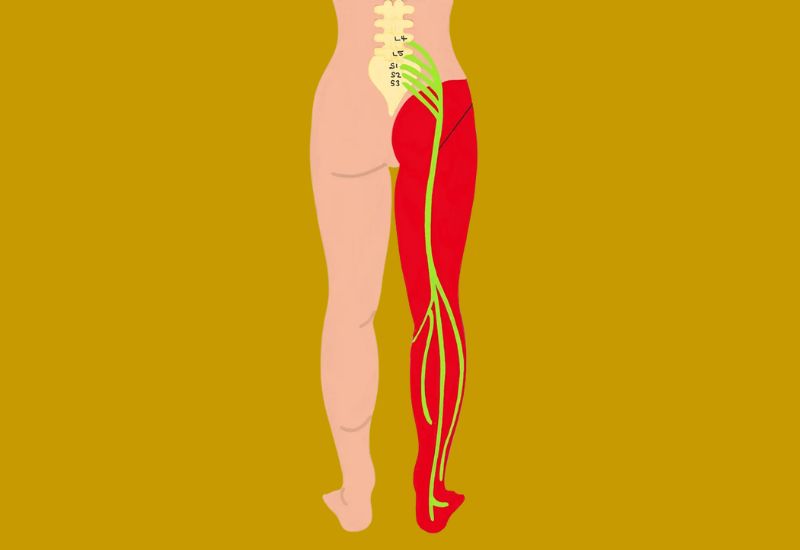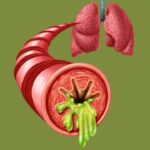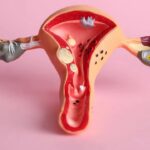Sciatica can significantly impact a person’s mobility, quality of life, and mental well-being. Characterized by pain radiating from the lower back through the buttock and down the leg, this condition is commonly misdiagnosed as other spinal disorders. However, with early recognition and appropriate treatment, sciatic is often manageable and controllable. This article provides essential information on what sciatic is, how to recognize its symptoms, and effective treatment options.
1. What Is Sciatica and What Causes It?
1.1 Understanding Sciatica
Sciatica refers to discomfort that follows the path of the sciatic nerve, which is the longest nerve in the human body. It begins in the lumbar spine, passes through the buttock, and continues down the back of the thigh to the foot. The pain typically affects only one side of the body and may extend all the way to the toes.
The most common cause is compression or inflammation of the sciatic nerve. A herniated lumbar disc is the leading culprit, where the displaced disc material presses on the nerve root, resulting in radiating pain along the nerve’s pathway.

Sciatic nerve pain refers to pain along the sciatic nerve pathway.
1.2 Common Causes of Sciatica
Several conditions may contribute to sciatic nerve pain, including:
– Lumbar disc herniation (most common)
– Spinal stenosis, particularly in older adults
– Degenerative arthritis or spinal osteoarthritis
– Spinal tumors pressing on the nerve
– Pregnancy or poor body posture during work
These factors can alter the alignment or pressure distribution in the lumbar spine, resulting in nerve irritation or compression.
2. Key Symptoms and How to Identify Sciatica
2.1 Typical Symptoms
The hallmark symptom of sciatica is sharp or burning pain starting in the lower back, traveling through the buttock, and extending down the back of the leg. Patients may also experience tingling, numbness, or a pins-and-needles sensation. The pain intensifies with sudden movements such as coughing, sneezing, or prolonged sitting and standing.
Muscle weakness in the affected leg, difficulty walking, and reduced balance are also common. In severe cases, there may be partial loss of sensation in the foot or lower leg.
2.2 Differentiating from Other Conditions
Unlike general low back pain, sciatic nerve pain is typically not limited to the lumbar region. If the discomfort spreads down the leg and is accompanied by numbness or weakness, sciatic nerve involvement is more likely. Additionally, sciatic pain worsens with movement or certain postures, whereas musculoskeletal back pain may improve with rest.

Pain in the buttock, thigh, and lower leg are typical symptoms of sciatica.
3. Diagnosis and Treatment of Sciatic Nerve Pain
3.1 Diagnostic Procedures
To accurately diagnose the cause of sciatic nerve pain, healthcare providers perform a combination of physical examination and diagnostic imaging. Key assessments may include:
– X-rays to identify structural abnormalities
– MRI to assess disc and nerve conditions
– CT scans when MRI is contraindicated
– Electromyography (EMG) to evaluate nerve and muscle function
These tests help determine the root cause and guide treatment decisions.

Spinal MRI is a common method used to diagnose sciatic nerve pain.
3.2 Conservative Treatment Options
In most cases, conservative treatment is the first line of approach. Pain relief medications, non-steroidal anti-inflammatory drugs (NSAIDs), and muscle relaxants are commonly prescribed. Physical therapy, including hot/cold compresses, therapeutic massage, and stretching exercises, can significantly reduce symptoms.
Spinal decompression exercises under expert supervision may relieve nerve pressure. Patients are also advised to avoid heavy lifting and maintain proper posture to prevent flare-ups.
3.3 When Surgery Is Necessary
Surgical intervention is considered if symptoms persist beyond 6–12 weeks of conservative care or if there is significant muscle weakness, loss of bladder/bowel control, or neurological deficits. Surgery may involve removing part of a herniated disc or widening the spinal canal to relieve nerve compression.
4. Prevention and Recovery
4.1 Healthy Lifestyle Habits
To prevent sciatica, maintaining a healthy weight and engaging in regular low-impact exercises such as swimming, walking, or yoga is essential. Strengthening the core and back muscles improves spinal support.
Practicing correct posture while lifting objects and avoiding prolonged sitting or standing can also reduce strain on the lower spine. Frequent breaks during sedentary work and gentle stretches are recommended.
4.2 Role of Physical Therapy in Recovery
Post-treatment rehabilitation is vital. Gentle stretching, therapeutic massage, and targeted exercises help improve blood circulation, reduce inflammation, and prevent muscle stiffness. Personalized physical therapy programs also strengthen the lumbar and abdominal muscles, offering better protection against recurrence.
Sciatica is a common but manageable condition when diagnosed early and treated appropriately. Understanding the symptoms and causes, combined with timely intervention and healthy habits, empowers patients to regain mobility and improve quality of life. At trusted healthcare centers in Vietnam, such as Thu Cuc Healthcare System, patients can access comprehensive care for sciatic nerve pain with modern equipment and experienced specialists.








